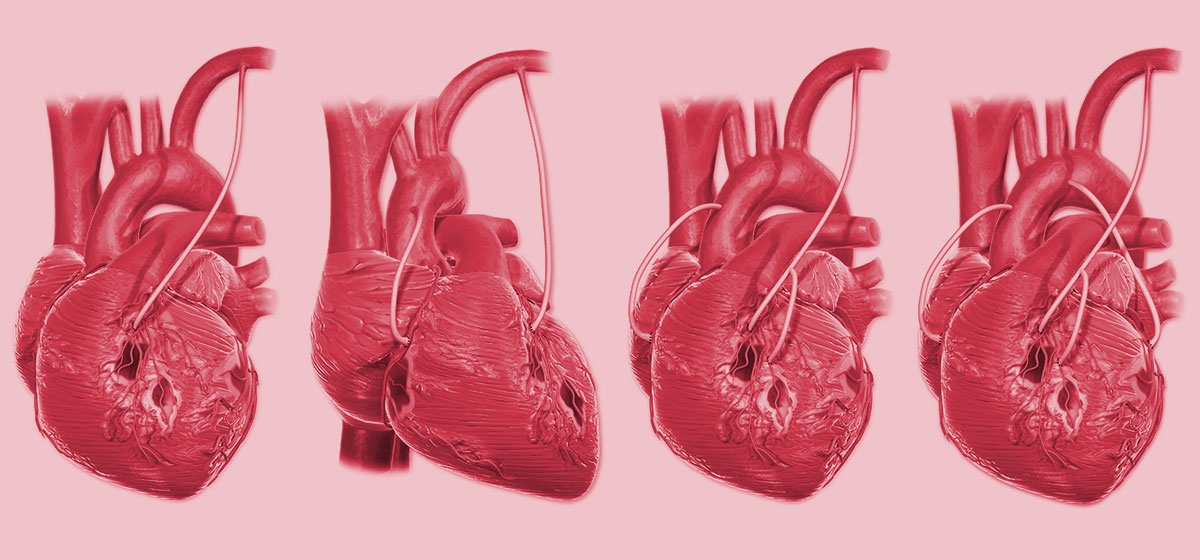Is Coronary Bypass Surgery Obsolete?

“You will die with exactly the same heart muscle cells you came out of the womb with.” —Consulting cardiologist, speaking to Your Humble Blogger
Having recently experienced the gruesome-car-crash known as coronary artery bypass graft (CABG) surgery, I was naturally wondering why, instead of doing its best to kill an already very fragile patient, medical science didn’t just allow the heart to heal itself, to regenerate on its own.
The answer was the quote reproduced above. In the womb, human heart muscle cells (cardiomyocytes) reproduce and multiply until the heart is fully formed. But then, after birth, those cells become “post-mitotic,” that is, they are no longer able to divide.
And thus it is that the frail, helpless human heart can only be salvaged by the heroic efforts of the CABG surgeons—not. As my Kentucky grandfather used to say, that is a pile of steaming cow dung.
When a person has a heart attack, it’s not usually the heart that is diseased, it’s the coronary arteries. And as we’ve seen in the earlier posts in this series, those arteries heal themselves very nicely, thank you, via angiogenesis, arteriogenesis and collateralization.
If it were only the arteries we needed to worry about, CABG surgery would go the way of bloodletting and trepanation. And good riddance.
Unfortunately, when coronary arteries close up, the heart muscle is starved of oxygen and begins to die. This process makes the heart structurally unstable and no one—no one—would survive a heart attack. Fortunately, the heart is ready for this and quickly forms a scab and then scar tissue at the site of the injury.
That’s the good news. The bad news is that dead heart muscle cells that have been transformed into scar tissue (fibroblasts) don’t beat, thus compromising the heart’s ability to pump. The worse news is that the non-functional scar tissue adds to the hemodynamic burden on the heart. The worst news is that the scar interferes with the heart’s electrical conductivity, resulting in weird heartbeats that force the heart to over-work, shortening its (and its host’s) life.
All of which caused me to ask my consulting cardiologist why doctors don’t just allow the heart to heal itself, which caused the cardiologist to tell me—see above quote—that heart muscle can’t heal. So utterly certain was medical science that heart muscle cells can’t regenerate that no one ever bothered to actually check.
But I reasoned as follows. Suppose Your Humble Blogger wasn’t just a Humble Blogger but, say, God. Would I so arrange matters that all the muscles in the human body could regenerate themselves except the heart muscle? Isn’t the heart muscle more important than all the others combined? Is this a likely direction for human evolution to have taken?
You will not be surprised to learn that Your Humble Blogger wasn’t the first human being to think along these lines. In 2008, some folks at the Karolinska Institute in Stockholm performed a clever experiment on human heart muscle cells to prove that, in fact, they can and do regenerate.
The experiment took advantage of Cold War nuclear bomb tests that left traces of carbon-14 in heart cell DNA. If all we have is the heart cells we were born with, as my consulting cardiologist assured me, then people born before above-ground testing began in 1955 should have very low levels of carbon-14 in their cardiomyocytes. People born later should have higher levels (in both cases mirroring the carbon-14 concentration in the atmosphere at various times).
In fact, people born before testing have (higher) concentrations of radioactivity in their cardiomyocytes that mirror atmospheric levels prevailing long after they were born. And people born after 1955 have concentrations different from the atmospheric levels that prevailed when they were born. These results demonstrated clearly that cardiomyocytes had regenerated throughout the lifetimes of the people tested.
In fact, the experiment showed that, on average, 50-year-olds have roughly equal numbers of original and regenerated heart muscle cells in their hearts. Thus, my consulting cardiologist had it precisely wrong—if you live long enough, you will die without a single heart muscle cell you came out of the womb with.
“The near-exponential rise in PCI [stents] in the treatment of patients with coronary artery disease and the consequent decline in referral of patients for CABG has led to a crisis in cardiac surgery.” —Tom Dehn, Series Editor, Annals of The Royal College of Surgeons of England
“Surgeons need to promote CABG (and urgently).” —David P. Taggart, Annals of The Royal College of Surgeons of England
Since the heart can, in fact, heal itself, growing new muscle cells, why is it necessary to resort to the brutal expedient of CABG surgery? In fact, it isn’t, except in the U.S.
For example, people who are referred for CABG surgery, but who refuse to undergo it, turn out to have outcomes that are every bit as good as those of patients who had the surgery. And without the trauma of the car crash.
In the U.S., CABG surgery is by far the most common heart surgery, and, indeed, one of the most common surgeries of any kind. But in Europe and Japan, CABG is dying out so fast that heart surgeons in those places view it as archaic, seriously threatening the profession of cardiac surgery (see the quotes above). In many European countries, stent interventions now outnumber CABG surgeries 5-1.
Aside from reducing the compensation of heart surgeons by, say, 75 percent, is there any way to stop the CABG patch in its tracks? Maybe so, as we’ll see next week.
Next up: Opening the Medical Mind, Part V





